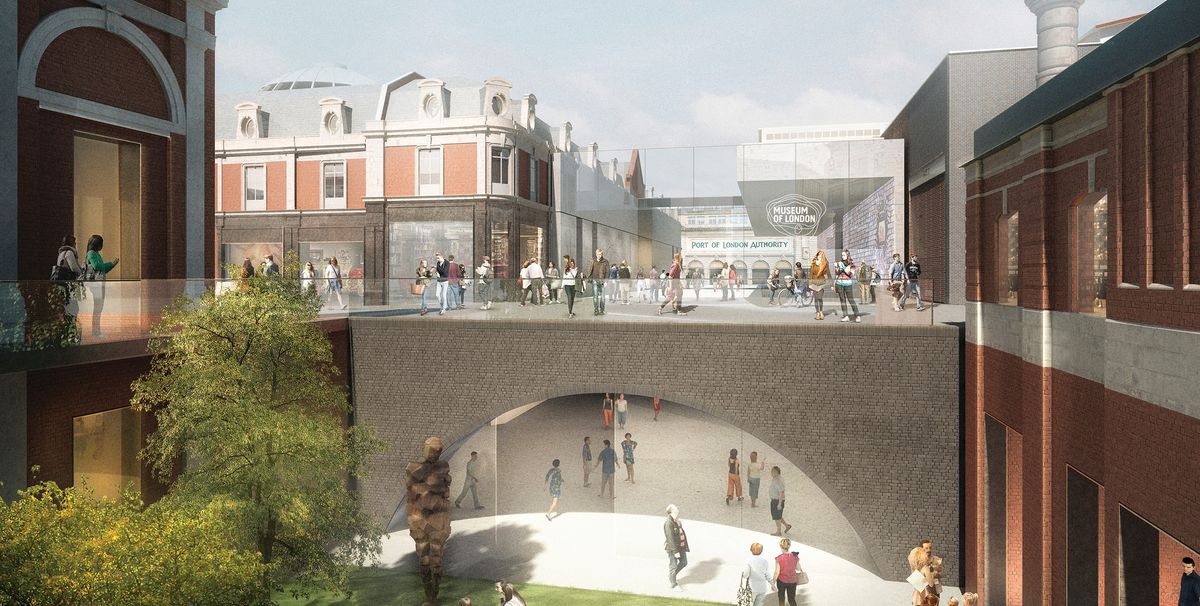The new Museum of London is one of the UK’s most expensive museum projects. The institution’s move to former market buildings in Smithfield is expected to cost an estimated £250m—only slightly less than Tate Modern’s £260m extension, which opened last year. If there are significant cost overruns, the Museum of London’s project will surpass the Tate.
The project is so expensive, in part, because it involves converting a complex of 19th-century buildings of national heritage status. The architects, Stanton Williams and Asif Khan, plan to preserve the basic exterior structure of the buildings and update the interiors for public use. There will be a huge foyer under a dramatic glass dome in the general market building, with the museum galleries below ground.
The museum announced earlier this year that it had secured £180m towards the project, with grants of £110m from the City of London Corporation and £70m from the Mayor of London. These grants represent the largest single sums that a UK museum has ever received, but a further £70m must still be raised.
The Museum of London’s present building, on the edge of the Barbican, opened in 1976 and the premises are now out of date. The Smithfield location is a five-minute walk away, but it is much easier to access than the existing site.
The converted market will provide a new setting to present the museum’s collection of six million objects spanning prehistoric times to the present. The Smithfield building, due to open in 2022, will increase gallery space by a third. Visitor numbers are also expected to double, from one to two million a year.


